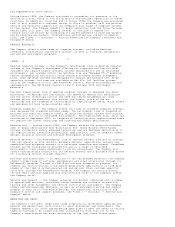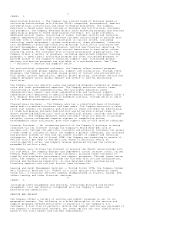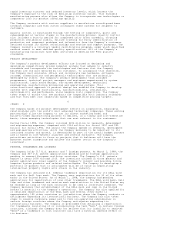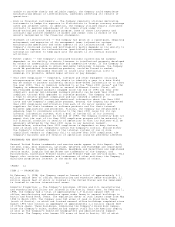Dell 1997 Annual Report Download - page 12
Download and view the complete annual report
Please find page 12 of the 1997 Dell annual report below. You can navigate through the pages in the report by either clicking on the pages listed below, or by using the keyword search tool below to find specific information within the annual report. Basic................................ $ 1.44 $ 0.75 $ 0.36 $ 0.23 $(0.07)
Diluted.............................. $ 1.28 $ 0.68 $ 0.33 $ 0.19 $(0.07)
Weighted average shares(a):
Basic................................ 658 710 716 618 597
Diluted.............................. 738 782 790 750 597
Balance Sheet Data:
Working capital........................... $ 1,215 $1,089 $1,018 $ 718 $ 510
Total assets.............................. $ 4,268 $2,993 $2,148 $1,594 $1,140
Long-term debt............................ $ 17 $ 18 $ 113 $ 113 $ 100
Total stockholders' equity................ $ 1,293 $ 806 $ 973 $ 652 $ 471
---------------
(a) The Company adopted Statement of Financial Accounting Standards No. 128,
"Earnings Per Share," in the fiscal year ended February 1, 1998. All
historical earnings per share data have been restated to conform to this
presentation. Additionally, all share and per share information has been
retroactively restated to reflect the two-for-one splits of the common stock
in March 1998 and July 1997. See Note 1 and Note 7 of Notes to Consolidated
Financial Statements.
(b) Excludes extraordinary loss of $0.02 basic per common share and $0.02
diluted per common share for fiscal 1997. See Note 2 of Notes to
Consolidated Financial Statements.
12
<PAGE> 14
ITEM 7 -- MANAGEMENT'S DISCUSSION AND ANALYSIS OF FINANCIAL CONDITION AND
RESULTS OF OPERATIONS
The Company's objective is to maximize stockholder value by executing a strategy
that focuses on a balance of three priorities: growth, profitability and
liquidity. The following discussion highlights the Company's performance in the
context of these priorities. This discussion should be read in conjunction with
the Consolidated Financial Statements.
RESULTS OF OPERATIONS
The following table summarizes the results of the Company's operations for each
of the past three fiscal years. All percentage amounts were calculated using the
underlying data in thousands.
FISCAL YEAR ENDED
-------------------------------------------------------------
FEBRUARY 1, FEBRUARY 2, JANUARY 28,
1998 INCREASE 1997 INCREASE 1996
----------- -------- ----------- -------- -----------
(DOLLARS IN MILLIONS)
Net revenue................................ $12,327 59% $7,759 47% $5,296
Gross margin............................... $ 2,722 63% $1,666 56% $1,067
Percentage of net revenue................ 22.1% 21.5% 20.2%
Operating expenses......................... $ 1,406 48% $ 952 38% $ 690
Percentage of net revenue................ 11.4% 12.3% 13.1%
Operating income........................... $ 1,316 84% $ 714 90% $ 377
Percentage of net revenue................ 10.7% 9.2% 7.1%
Net income available to common
stockholders............................. $ 944 83% $ 518 99% $ 260
Net Revenue
The Company has become one of the top three computer vendors in the world as a
result of its continued revenue growth. The increases in consolidated net
revenue for both fiscal 1998 and fiscal 1997 were principally due to increased
units sold. Unit shipments grew 60% and 55% for fiscal years 1998 and 1997,
respectively.
The unit volume growth in fiscal 1998 resulted from increased demand for the
Company's products across all product lines. This growth was driven by the
Company's continued sales efforts to win new customer accounts through
aggressive pricing actions and to increase market penetration of new and
higher-end products, including products incorporating Intel's Pentium(R) Pro and
Pentium II processors of speeds greater than 200MHz. While desktop products
continue to be the primary driver of unit volumes (comprising 84% of total unit
shipments in fiscal 1998), the growth rates in both the enterprise (the
combination of servers and workstations) and notebook product lines exceeded the
growth rate in desktops during fiscal 1998. Unit sales of desktop computers
increased 55%, while unit sales of enterprise and notebook computers increased
265% and 66%, respectively, during fiscal 1998.
Average revenue per unit in fiscal 1998 remained relatively stable compared to
fiscal 1997. Although aggressive pricing in the desktop product line adversely
affected average revenue per unit, this was partially offset by increases in the
enterprise and notebook product lines, primarily due to a migration to
























